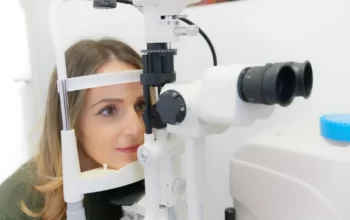
In the modern era, cataract surgery has developed to become a refractive procedure. Our patients are constantly asking for a better quality of life and the clearest vision. Thus, the top priority for eye surgeons is how to best meet this demand. Surgeons are increasingly able to achieve desired refractive outcomes following cataract surgery thanks to sophisticated refractive tools and technologies that take into account more recent insights into ocular anatomy, physiology, and pathology.
Only 55% of patients experience emmetropia (±0.5 D), despite the fact that most eye surgeons are capable of performing safe cataract surgery.[1] This study also demonstrated how even a small amount of lower order refractive error can have an impact on how functional and satisfying the visual results are following cataract surgery. Nowadays, it is widely accepted that treating or merely reducing even lower orders of astigmatism during cataract removal improves the visual result and increases patient satisfaction.
What Is A Cataract Operation?
By replacing a cloudy lens with a transparent one, cataract surgery can solve vision issues. To properly focus light onto the retina, the eye’s lens must be clear.
Your vision may appear blurry or out of focus, or you may notice halo effects around lights as a result of a cataract, which is a clouded lens. Due to this, nighttime vision may be particularly challenging. Cataracts typically affect both eyes, though not always equally, and are often age-related. Your level and type of vision impairment are determined by the location and density of the cloudy area in your lens.
Your natural lens is removed during cataract surgery, and a synthetic lens is put in its place. The treatment for the eyes occurs separately, typically a few weeks apart. “If only one eye is truly affected, then the opposite eye can wait until such time that a clinically significant cataract develops,” says Ophthalmologist Dr. Emilio Justo practices in Sun City West, Arizona.
In addition to replacing the vision that cataracts have taken away, the new lens can also correct nearsightedness, farsightedness, and astigmatism (with a toric lens implant) and even provide distance and close-up vision at the same time (with a multifocal or trifocal lens implant). As a result, you might not need to use reading glasses after the procedure.
“Given all the new technology available, having a cataract removed presents a great opportunity to significantly improve your vision. Many people experience vision far better than they can even remember—especially those who wore strong prescriptions,” says Dr. Justo.
That was the case with Baoqin Zhang, a RealSelf user whose cataracts worsened to the point where she was rendered legally blind. “My vision was back to 20/25 the second day following the procedure. I could see everything, including my husband’s smile and my grandchildren’s expressive faces. It was magic!”
In the United States, more than 3 million cataract surgeries are carried out annually., making it one of the most common types of eye surgery.
What Are The Benefits And Drawbacks Of Cataract Surgery?
Pros
- The procedure to remove cataracts is secure and efficient. Approximately 95% of patients who undergo the procedure experience improved vision afterward.
- The majority of people notice an almost immediate improvement in their vision, which continues over the ensuing weeks.
- The procedure is quick (less than an hour) and painless. You won’t need anesthesia, but the eye is numbed.
- It only takes a few days to recover.
- The new artificial lenses typically last a lifetime, and because they don’t cause cataracts, there is no possibility of a cataract returning after surgery because they don’t cause cataracts.
- No need to rush to the operating room. The majority of the time, waiting won’t harm your eye or make the procedure more challenging. “I tell patients that the time for cataract surgery is when you cannot see to do what you want to do,” says Chicago ophthalmologist Dr. Mark Golden in a RealSelf Q&A.
- The majority of complications are minor and can be successfully treated.
- The median age for the surgery is 68, so age is not a factor, but your surgeon should be aware of your medical background.
- As long as the eyes have had enough time to heal, contact lenses can be worn after cataract surgery if necessary.
- Once you have the surgery, you won’t need it again because cataracts cannot grow back.
- It is uncommon for a cataract procedure to need revision. Most intraocular lens implants can be taken out and replaced if necessary for medical reasons.
Cons
- Surgery is typically performed on one eye first, and then the other, a few days or weeks later, if you have cataracts in both eyes.
- Up to 50% of the time, the capsule that holds the implant in place becomes cloudy, resulting in vision that is once more blurry. This “second cataract” is treated with a minor laser procedure.
- You might require new glasses or contact lenses after surgery.
How Much Does Cataract Surgery Cost?
- Average Cost:
- $7,150
- Range:
- $5,300 – $9,000
Your cost will be influenced by the kind of intraocular lens (IOL) that is inserted into your eye, the procedure used by your provider, their credentials, and a few other important factors.
How Do You Determine When You Should Have Cataract Surgery?
One or both of your eyes may have clouded lenses if you experience cloudy, dim, or blurry vision, or if objects no longer appear as bright or colorful as they once did. Many claim that having cataracts has an effect on their vision that is comparable to looking through a dirty car windshield.
Only when the vision change starts to interfere with daily activities, such as making it more challenging to drive, read, or watch TV, do cataracts need to be removed. In some circumstances, simply altering your eyeglass prescription may only temporarily improve your vision before the cataract worsens and surgery is required.
“The proper time to consider cataract surgery is when significant enough clouding of the natural lens develops and causes blurring of vision, glare, halos, starbursting, difficulty seeing street signs, and difficulty with small print,” says Dr. Justo. “Consider cataract surgery when the patient feels that their vision has been significantly compromised and cannot be easily corrected with eyeglasses.”
Patients should also be advised on whether the level of clouding matches the visual haziness they are experiencing. Your doctor needs to rule out any other vision issues or eye conditions that might cause comparable symptoms, such as macular degeneration, diabetic retinopathy, glaucoma, and epiretinal membranes.

How Long Can You Wait To Have Your Cataracts Removed?
The majority of the time, there is no harm in delaying cataract surgery. But don’t wait too long: untreated cataracts can harden and become “hypermature,” which makes them more difficult to remove and more likely to cause surgical complications. Cataracts can result in blindness if untreated for an extended period of time (typically years).
What Occurs During Cataract Surgery?
You’ll need to be off contact lenses for at least a week if you wear soft lenses and three to four weeks if you wear hard lenses (which change the shape of the eye more) before getting pre-op measurements for the surgery because contact lenses change the shape of the cornea’s surface, the clear covering on the front of your eye. Dr. says it is crucial that you follow this directive. In a RealSelf Q&A, oculoplastic surgeon Ahad Mahootchi from Zephyrhills, Florida. Your surgeon will be able to choose the ideal focusing power for your new lenses if the surface measurements are precise.
The surgery can be performed in a hospital, but it is typically an outpatient procedure. Although your eye will be numbed and you’ll be given a sedative to help you relax, the procedure will take place while you’re still awake. Your cornea’s edge will be incised one or more times during the procedure. The lens is then split into teeny pieces using ultrasound waves after a tiny probe is inserted. The fragments are then carefully removed by suction.
The intraocular lens implant (IOL) is put in place after the particles have been eliminated. The most frequently used cataract surgery technique is phacoemulsification, also known as phaco (short for phaco).
The incision doesn’t need to be stitched up; it will mend on its own in a few days. Your eye may be covered with a transparent shield or patch to keep it safe throughout this procedure. After the first day, you might be required to wear the shield (which is held in place with paper tape) only at night for up to two weeks.
You’ll be prepared to return home after a brief period of rest following the procedure. Make arrangements for someone to drive you home because you might be able to drive but you’ll likely still feel groggy from the surgery.
The Discomfort Level Of Cataract Surgery
“There should truly be absolutely no pain during or after cataract surgery,” says Dr. Justo, occasionally, some patients may experience a brief scratching or irritated feeling for a few days (similar to having an eyelash in your eye). However, the majority of patients don’t experience any unusual postoperative symptoms.
How Safe Is Laser Cataract Surgery?
In a laser cataract procedure, the surgeon opens the lens and fragments the cataract using a femtosecond laser rather than hand-held surgical instruments. In comparison to fully performing the procedure manually, the procedure is more controlled and precise, according to Dr. Justo.
By doing so, certain risks may be minimized and the visual results of cataract surgery may be enhanced.
However, “using the term ‘safer’ may be a slight exaggeration, as I doubt that this has been scientifically established. And clearly, there are highly experienced surgeons who do not use laser and still may be excellent surgeons who get excellent results,” says Dr. Justo.
One benefit of having laser cataract surgery is that your surgeon is likely to also offer other cutting-edge technologies, such as Verion (an image-guided system that enables the surgery to be specifically tailored to your eyes), ORA (Optiwave Refractive Analysis), and advanced lens implants. ORA takes extremely accurate measurements of the patient’s eye during surgery to determine the power and strength of the lens implant.
“It’s always beneficial to at least educate each patient and explain to [them] what advanced technologies may benefit them and for what specific reason,” says Dr. Justo. “Realistically, you only have one chance to achieve your vision goals, so the more informed the patient, the more likely it is that they will make wise choices.”
The Ideal Lens For Cataract Surgery?
In every cataract surgery procedure, an artificial lens (known as an intraocular lens, or IOL) is used to correct your distance vision and improve your ability to see clearly and sharply in the distance. There are also premium “toric” lenses that correct for astigmatism and lenses that correct for near vision.
There are more recent multifocal lenses that can correct near and far vision simultaneously, minimizing or doing away with the need for reading glasses.
According to Dr. Justo, “There are no insurance plans in the United States that will pay for expensive IOLs like toric and multifocal lens implants., They are regarded as an “out of pocket upgrade” and are from Canada or Europe.'” For your specific situation, your surgeon can assist you in determining whether the advantages of the upgrade will be worth the price.
Whatever kind of lens you receive, it will become a permanent component of your eye and won’t need to be replaced or maintained. It won’t be visible or audible to you.



